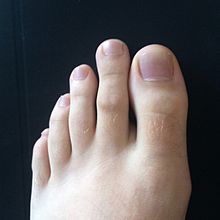Morton’s neuroma is a common foot problem affecting nerve tissue in the ball of the foot, usually occurring between the 3rd and 4th toes. The 2nd and 3rd toes also can develop a neuroma condition, but it’s less common. Morton’s neuroma can make walking difficult. It may feel as if you are walking with a pebble in your shoe.
Symptoms of the condition include:
- Sharp pain
- Tingling
- Burning
- Numbness to the forefoot
- Pain that worsens over time
- Increased pain when wearing shoes (especially high heels) or pressing the area during certain activities, such as pushing the gas or brake petal on a car
Causes
Morton’s neuroma is caused from an abnormal function of the foot that causes the bones to squeeze the nerve between the toes. When the nerves experience irritation, pressure or injury, your body responds by causing the nerve tissue to thicken (neuroma). Symptoms often occur during or after there has been significant pressure placed on the forefoot area. This condition is not limited to, but is usually caused by, footwear selection. Footwear with a restricted toe box area, such as tapered or pointed-toe shoes, constricts and pinches the nerve between the toes, leading to discomfort and mild to extreme pain. Inflammation can develop, leading to a neuroma condition.
Treatment
The first step in treating a Morton’s neuroma is to wear properly fitted footwear with a broad toe box and extra depth. Also, you should reduce the heel height of your footwear. High heels put more pressure on the forefoot area, which must be reduced.
The second, and most important, step is choosing a ultra light, custom-fitted ezWalker® orthotic device to support the hind foot and secure the arch while unloading pressure on the forefoot and the nerve. This will provide stability, balance and bring relief to Morton’s neuroma pain. With the use of an ezWalker® Custom Orthotic, you can say goodbye to forefoot pain and hello to comfort.
For extra relief, you can add a metatarsal pad to release even more pressure on the forefoot and open up the nerve channel. A metatarsal pad supports the transverse arch, or the metatarsal arch, of the foot. A metatarsal pad is an additional minimal charge that provides maximum benefits.
Our feet are constantly changing as we age. So you have your shoe fit checked regularly. And remember, the size on the measuring device is only a reference. Mass-manufactured shoes are NOT all created equal. Refer to the Shoe Fitting Reference Guide for proper guidelines on how to best fit your shoes.
Note: If you follow these guidelines but still have severe pain in the forefoot area, you must consult your physician for a proper diagnosis and treatment.

